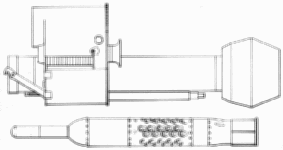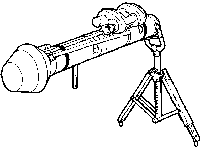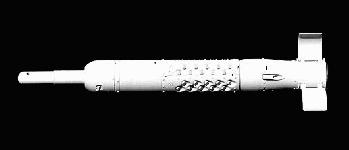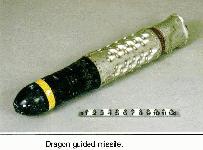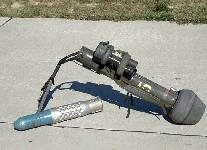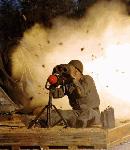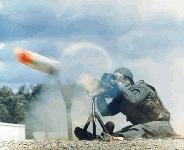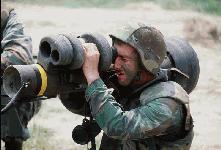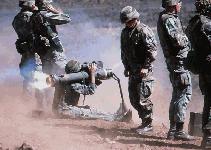


The Dragon is a medium range, wire-guided (guidance of the missile to target is controlled by a thin wire), line-of-sight anti-tank/assault missile weapon capable of defeating armored vehicles, fortified bunkers, concrete gun emplacements and other hard targets. The system contains a launcher, tracker and missile. The launcher is an expendable, smooth bore, fiberglass tube with tracker and support bipod, battery, sling and front and back shock absorbers. It is designed to be carried and fired by an individual gunner.
The warhead power of Dragon makes it possible for a single soldier to defeat armored vehicles, fortified bunkers, concrete gun emplacements, or other hard targets. The Dragon was developed for the US Army in 1970. It uses a cone-shaped charge for maximum penetration. The wire guidance allows the gunner to hit his target by keeping the cross hairs on the target until detonation. The missile is installed in the launcher during final assembly by the manufacturer and is received in a ready-to-fire condition. The launch tube serves as the storage and carrying case for the missile. The launcher consists of a smoothbore fiberglass tube, breech/gas generator, tracker and support, bipod, battery, sling, and forward and aft shock absorbers. Non-integral day and night sights are required to utilize the Dragon. The launcher is expendable. The day and night tracker sights can be reused.
The US Dragon was redesigned twice, and evolved into the present Superdragon by 1990. The first-generation Dragon, a 1000-meter system requiring 11.2 seconds flight-to-target time, was developed for the US Army and fielded in 1970. A product improvement program (PIP) was initiated by the Marine Corps in 1985 and managed by NSWC Dahlgren. The PIP, designated Dragon II, was designed to increase warhead penetration effectiveness by 85%. The Dragon II missile is actually a retrofit of warheads to the first generation missiles already in the Marine Corps inventory. The current version is capable of penetrating 18 inches of armor at a maximum effective range of 1,500 meters. The Dragon saw limited use in Operation Desert Storm, and Iraq is believed to have captured Dragons from Iran. The Dragon guidance system has been criticized for requiring excessive gunner control, inaccuracy in general, and some early versions suffered recurrent rocket thruster failure. Manufactured by McDonnell Douglas, the Dragon was adopted by the US Army and Marine Corps and is used by at least 10 other countries. The Army has 7,000 systems in its inventory with approximately 33,000 Dragon missiles. The Marine Corps has 17,000 Dragon missiles in its inventory
Specifications
Guidance: Semi-automatic, wire Warhead High Explosive Anti-tank Warhead diameter: ca 140 mm Launch unit weight: 6.9 kg Launching Platforms Manpack (crew of 2) Missile weight: 10.07 kg Warhead weight 5.4 kg Missile length: 852 mm Max. effective range: 1000-1500 meters Range 75 meters (minimum) Max. velocity: ca 200 m/sec Penetration of armor: 400+ / 500 mm Manufacturer: McDonnell Douglas Aerospace, USA
